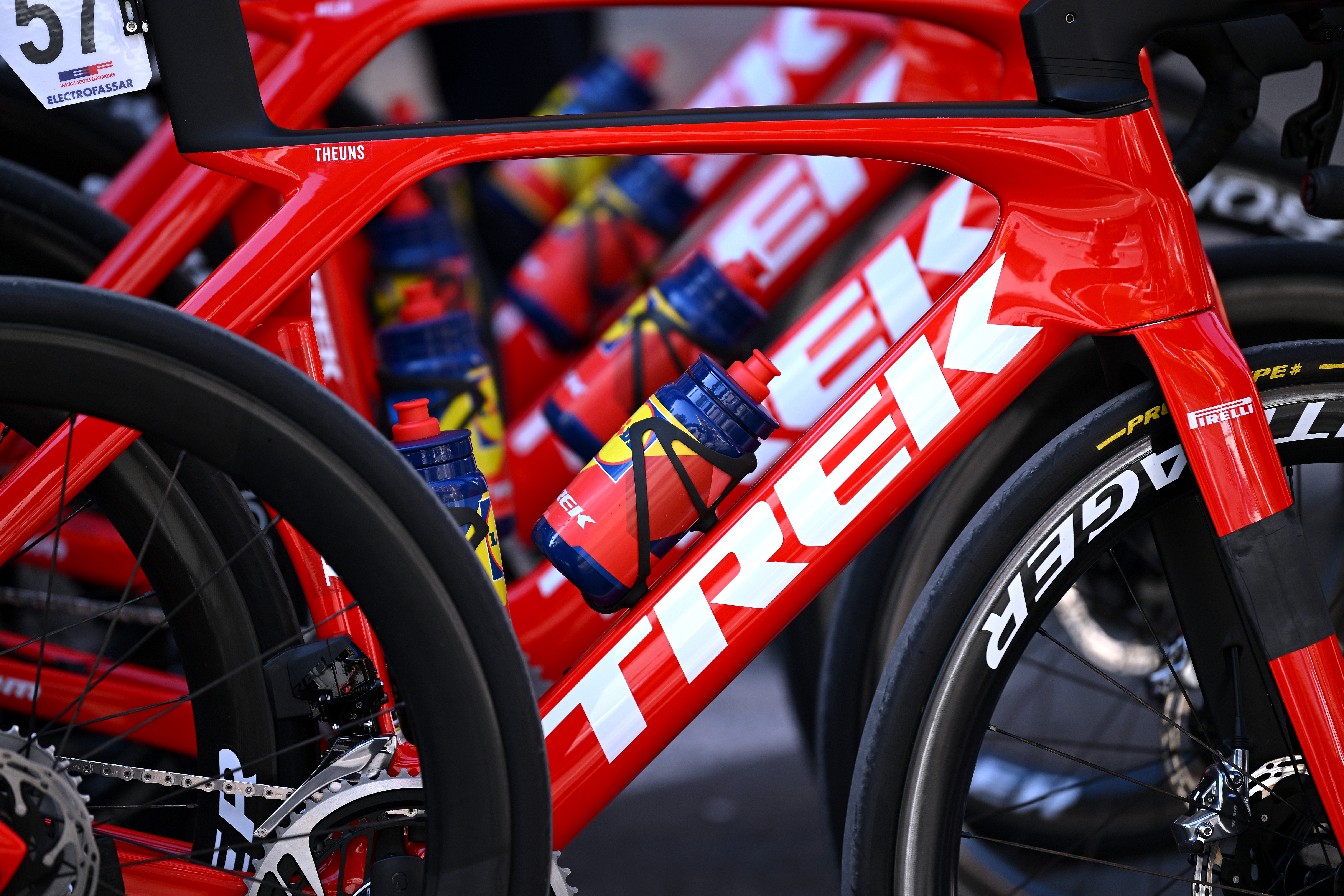
In the face of high inventory levels and reduced consumer demand, bike manufacturer Trek is looking to streamline its business model, a leaked memo from the company president suggests.
As reported by Bicycle Retailer last week, Trek is planning cuts in spending of 10% to "right size" the company, as well as a reduction in its number of product models by 40% by 2026. The measures come in what John Burke, the brand’s president, describes in a message to executives as "turbulent times in our business".
"The market is in chaos," he wrote.
Trek's model streamlining is planned as a reduction in its stock-keeping units (SKUs), the specific codes linked to products. Every bike and piece of equipment is filed under a different SKU for each size and colour it is available in, meaning there are likely thousands of unique codes at Trek, which the company will now look to almost half.
"I think a lot of this makes sense," Ian Whittingham, founder of retailer Sigma Sports, told Road.cc. "I think it’s a good time to reset and have a look at what you're offering, to consider whether you really need that many colour options or model options within each range.
"It’s probably quite a sensible move by Trek for their size business. It’s certainly something we've done in the last couple of years post-COVID. We’ve been trying to curate our ranges a bit better than we might have done before to make sure we were in stock with the right stuff rather than big, broad ranges of products."
After the cycling boom of the Covid pandemic, the industry experienced a significant dip in trade that still persists today. Some brands reacted to high inventory levels with fire sales, slashing prices on products and bikes.
For German manufacturer Canyon, heavy discounting led to a 23% increase in sales volume, but also contributed to financial losses.
"We saw most companies in the bicycle industry responding to inventory challenges with large discount campaigns in 2023," said Canyon CEO Nicholas De Ros Wallace in a statement to Cycling Weekly.
"When we also decided to do so, it not only led to increased sales, but also inspired new and existing customers to interact and engage with Canyon, and ultimately to enlarging the cycling community."
De Ros Wallace added that the "inventory and supply chain situation" has since improved. Still, Trek’s woes indicate that their impact is still being felt, compounded by high stock levels, particularly for brands operating on a larger scale.
Speaking to Cycling Weekly last year, David Ward of Giant UK said his company had no plans to release any new aluminium road bikes in 2024, save for updates to its Contend and Avail models.
"Sales are down on aluminium bikes," Ward said, "and I don’t think anybody in the industry is going to tell you anything different.
"We’re not necessarily getting any new people in [to buying bikes] at the moment. That’s down to interest rates, fuel, the cost of living. Something’s got to give."
Still, Ward added, Giant has been able to keep on top of its inventory levels. "Everything that we build is built to order. There isn’t a warehouse full of bikes waiting for different countries," he explained.
"I don’t think we reduced any of our carbon bike orders when we saw this dip happening. We’re not overstocked, we’ve got the right amount of stock, from a carbon road bike point of view. Some models we’ve got a couple too many, some are already sold out, and we’re struggling to get more of."
Trek president Burke was expected to provide a second update to his initial memo last Friday, but nothing has since come to light. Cycling Weekly has contacted Trek for a response, and will update this article if and when the company responds.







